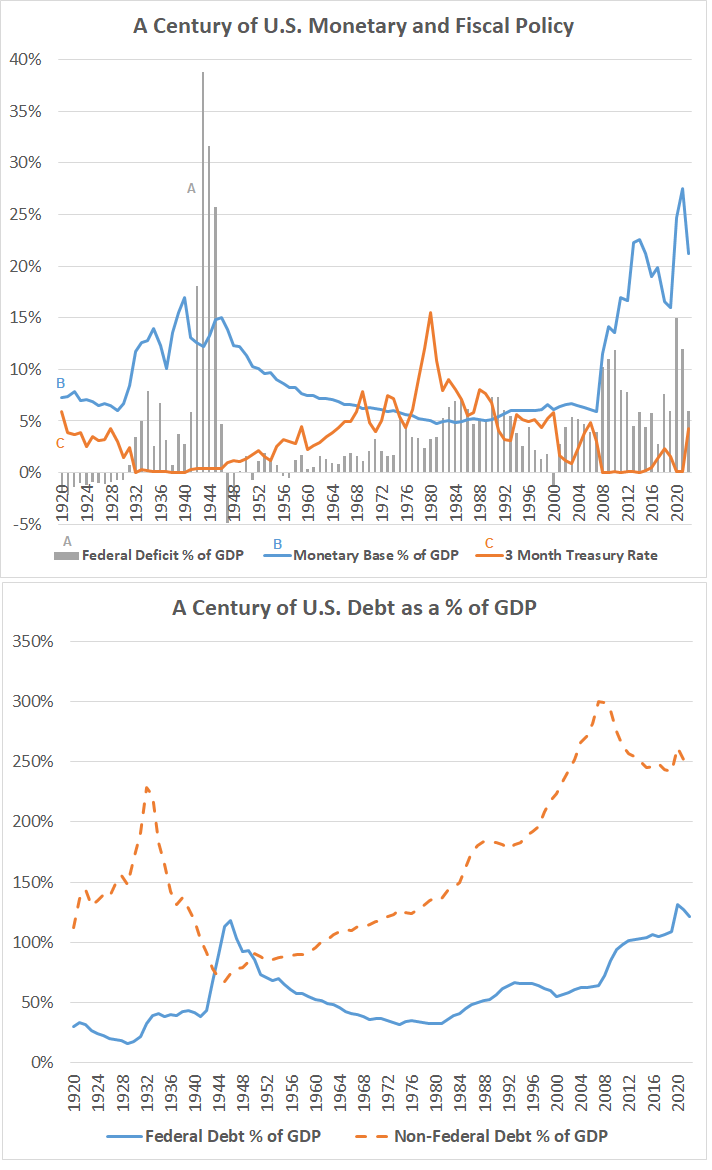Understanding Money: Bank Deposits and Bank Reserves
This blog post explains the difference between bank deposits and bank reserves, which are both forms of money. It explains how they are related to the Federal Reserve and how they are used in the early 1930s and 2008/2009.

Lyn Alden
Founder of Lyn Alden Investment Strategy. Fundamental investing with a global macro overlay. Finance/Engineering blended background.

-
Saying that bank deposits are money but bank reserves are not money, is kind of like saying food comes from the grocery store rather than the farm.
— Lyn Alden (@LynAldenContact) June 13, 2023 -
Dollars are liabilities of the Fed (banknotes + reserves). That's the monetary base. That's the farm.
— Lyn Alden (@LynAldenContact) June 13, 2023
Bank deposits are bank IOUs for dollars. When you send money to someone, you tell your bank to send reserves to their bank and credit that person's account with the same value. -
So, bank deposits are IOUs for dollars, and serve as an instruction set for the depositor to tell their bank how to send dollars around in various ways, usually through bank reserve transfers.
— Lyn Alden (@LynAldenContact) June 13, 2023
The problem is, banks always owe far more IOUs for dollars, than they have dollars. -
If anyone has any doubt about this, they were reminded in March 2023.
— Lyn Alden (@LynAldenContact) June 13, 2023
Silicon Valley Bank depositors had IOUs for dollars, but SVB itself had a mix of dollars plus other assets that needed to be sold for dollars to meet depositor redemptions and transfers. -
In certain eras, the ratio of IOUs for dollars vs actual dollars for the *whole* system gets out of hand, and so either it all implodes (bank deposits collapse down towards reserves) or the Fed prints the difference (reserves expand upwards towards deposits to cover them).
— Lyn Alden (@LynAldenContact) June 13, 2023 -
They eventually choose option 2.
— Lyn Alden (@LynAldenContact) June 13, 2023
In the early 1930s and again in 2008/2009, the U.S. recapitalized its banking system. Rather than letting bank IOUs continue into a deflationary collapse, they said, "alright, we'll just print way more reserves to honor existing IOUs). pic.twitter.com/GLsn1lDcYG -
Broad money (the IOUs) are more impactful for our everyday price inflation experience.
— Lyn Alden (@LynAldenContact) June 13, 2023
The more IOUs we collectively have to send around to each other, the richer we feel, and the more we bid up prices for things.
Changes in broad money (IOUs) affect consumer price inflation. -
This is because we assume (usually rightly) that all of those bank IOUs can be redeemed for dollars (which can only be created by the Fed) and are functionally equivalent for dollars.
— Lyn Alden (@LynAldenContact) June 13, 2023
Or as Allen elegantly said:https://t.co/XfS6vyH9MN -
Creating base money (what the IOUs technically get us) is impactful for maintaining the solvency of those IOUs.
— Lyn Alden (@LynAldenContact) June 13, 2023
IOUs become worthless if we realize we can't redeem them for dollars, and so their existence is based on the idea that we can get actual dollars when asked for. -
Creating more base dollars (which happened most aggressively during 1932-1934 and 2008-2009) is an act of making sure the tremendous amount of IOUs for dollars remain redeemable for dollars.
— Lyn Alden (@LynAldenContact) June 13, 2023
It's an act of anti-deflation, via money-printing. It keeps bank IOUs good for dollars. -
That's why QE is money printing.
— Lyn Alden (@LynAldenContact) June 13, 2023
QE creates base money, which all bank IOUs are redeemable for.
But it's the number of IOUs that most impact everyday consumer prices because that's what people use and what are always (except 1930-1933 until they capitulated) honored as dollars.
